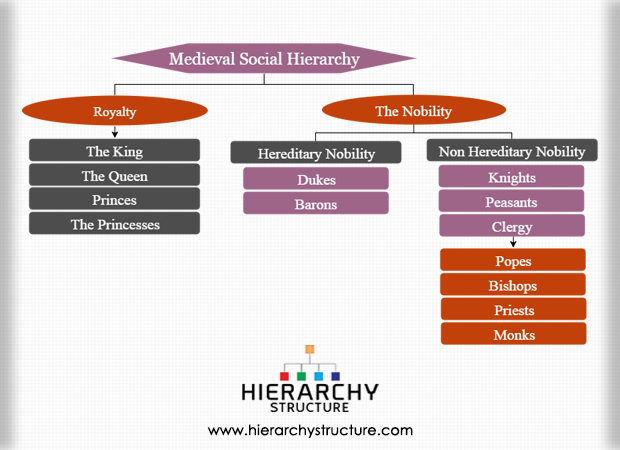During the middle ages or the medieval period, the society was divided into several different classes which were based on their importance in society and kingdom. These classes were divided and marked on the basis of factors like status, hereditary, income and others. About 90% of the people in the Religious medieval times were peasants but there was a clear divide in the social status of peasants and nobility. Clergy was also an crucial part of the social organization but they were not considered as a separate class.
Royalty
The royalty was the highest social class during the medieval period and consisted of kings, queens, princes and the princesses. These royals had total and complete power over the land and economical and political decisions during those times.
The king
The king was the highest authority during those times and was responsible for making laws and takes care of the people of the land.
The queen
The queen or the queens did not take part in the governing of the kingdom but were second in command and held a status of respect. They took major decisions when the king was unwell, hurt or incapable. Queens also served as hostesses for guests.
Princes
The princes were next in line for the throne after their father died and held high status in the medieval social structure.
The princesses
Unless there was no male to rule the kingdom before them, princesses were not in line for the throne.
The nobility
At the second position in the social class structure was the nobility. The nobility was of two types: the hereditary nobility and the non hereditary nobility.
Hereditary nobility
Dukes-the dukes were rulers of provinces and highest ranking in nobility class.
Barons-the barons were served in the military or were engaged in any field the king demanded them to. They earned a high title and lived a luxurious life.
Non hereditary nobility
Knights-the knights served as vassals and protected the lords in the army.
Peasants-this was a low rank in the medieval social hierarchy and included freemen, serfs and slaves. Freemen were those who had little rights and some land whereas slaves were those peasants who had no land and no rights. Serfs were those who had no political power and had no control over their property.
Clergy-the clergy was not directly a social class in the middle ages but had a lot of influence and importance. The following is the hierarchy within this class:
- Popes-popes were the final decision makers in the churches and had heavy influence on the kingdom.
- Bishops-second in line in the clergy were the bishops who were very wealthy and enjoyed a good social status as well.
- Priests-the priests gave masses in churches and collected church taxes too. They were respected by people of villages and towns.
- Monks-the monks were lowest in the social class of clergy and lives in monasteries and other religious places. The monks devoted their life to learning and to god and were worshippers of Christ.

